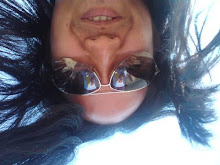Laser distance measurement devices are the fastest and most accurate way to collect measurements - especially, if those are multiple. You can measure distances at the push of a button or in just seconds, using one hand. This translates to savings in time and money. As with other electronic items, prices are falling and capabilities are increasing.
How they work is straight forward. A pulse of laser light is sent to a target and the reflection is detected. The time separating these two events is captured and converted into distance. The formula being implemented is simple: Distance = (Speed X Time) / 2. Speed, of course, is the speed of light which is roughly 300,000 kilometers per second. To resolve distances of 1 millimeter, the meter must be capable of measuring time intervals of the order of billionths of a second. As incredible as this sounds, it is within the capability of state-of-the-art Time-to-Digital-Converters (TDC's).
There are several dozen laser distance meters available on today's market. Brands like Leica, Bosch and Fluke have the most dominant presence. Some of their more popular models of two of these brands are touched upon below.
Bosch
The DLR130K is the most basic device in the Bosch product line. It is also the smallest and least expensive laser distance meter in the world. It can measure up to 130 feet with an error margin of 1.5 millimeter. It can calculate area, volume, add, subtract and measure in continuous mode.The Bosch GLR225 is a Bosch DLR130K that measures up to 225 feet and has more features. It can calculate minimum/maximum distance, indirect length and multi-surface area measurements. It is a professional tool.
The Bosch GLR500 can measure up to 500 feet with an accuracy of plus or minus 1.0 millimeter. It is suitable for both indoor and outdoor applications. It can do everything that the GLR225 does plus multi-cornered room area, tilt measurement and the stake out function. It is cheaper and better than similar meters from other manufacturers.
The Bosch GLR825 is the most advanced meter in the Bosch laser distance meter product line and a world record holder for maximum range. It can measure up to 825 feet with an incredible accuracy of 1.0 millimeter. It adds to the GLR500 an 1.6x magnification digital camera for locating the laser point on remote targets.
Leica Geosystems
The Disto D2 is built for indoor applications and holds the world record for sales volume. Its measuring range is 197 feet with an accuracy of 1.5 millimeter. It can calculate area and volume, add, subtract, measure in continuous mode, find the maximum and minimum and calculate indirect length.The D210XT is similar to the Disto D2, only much more robust. It holds the highest environmental certification, IP65, ensuring it is protected against jet water, dust and 6-foot drops.
The Disto D330 can measure from 1 inch to 300 feet with an accuracy of plus or minus 1.0 millimeter. It can do everything done by the Disto D2, plus smart horizontal mode, automatic calculation of room dimensions and of polygon areas. The D330i version offers Bluetooth connectivity to a computer for fast data transfer.
The Disto D5 adds greater capability to the D3 family. For an extra cost of $170 it extends the maximum range to 650 feet, offers measurement of roof slopes and facade areas, and far targeting with a digital point finder. It is in the same league as the GLR825, just more expensive.
The Disto D8 is the most state-of-the-art and versatile laser distance meter in the world. It is a Disto D5 that can measure heights without a reflection point, can measure roof slopes from remote distances and can determine ground profiles. Its most notable feature is its Bluetooth feature that allows it to link to computers and transmit stored data wirelessly and reliably.
Laser distance measuring devices have a wide variety of uses, from map making to civil engineering to sports. They can also be used in the military to provide precise information about targets for snipers or artillery, for reconnaissance and for engineering. Police often use them during crime scene investigation. Engineers and scientists frequently use laser measuring devices to construct 3D models of structures.
To learn more about Leica laser meters, Bosch and other popular models, please visit: http://www.bestlasermeasuringdevices.com/.

0 comments:
Post a Comment